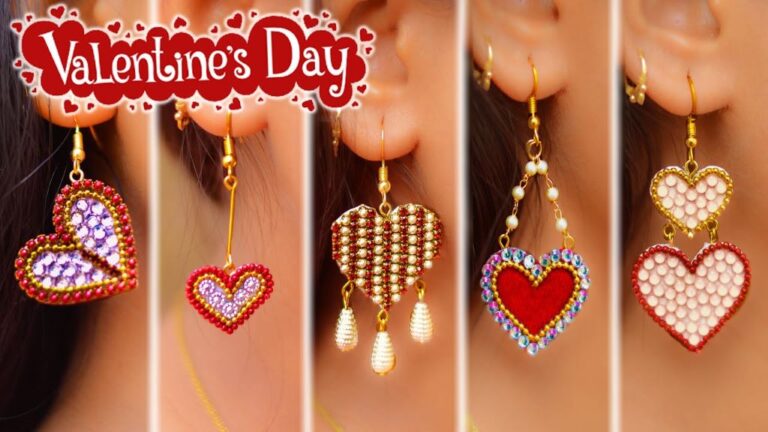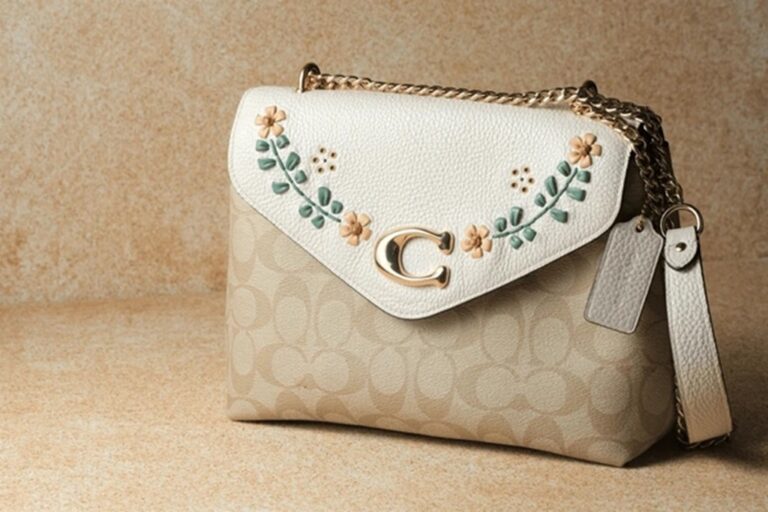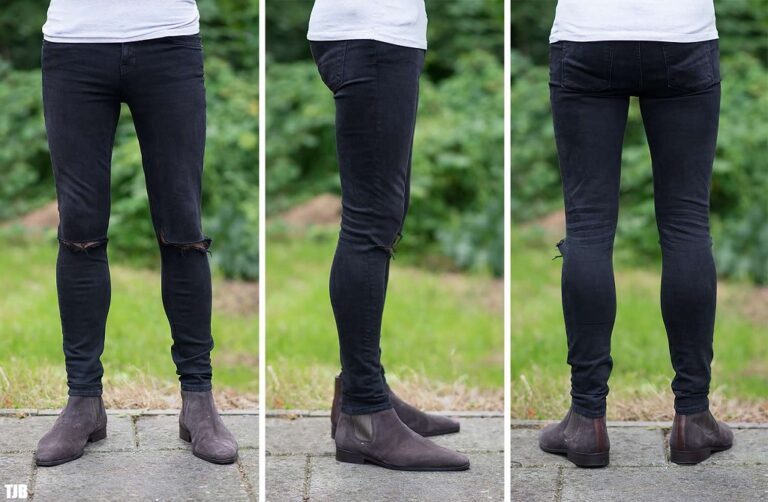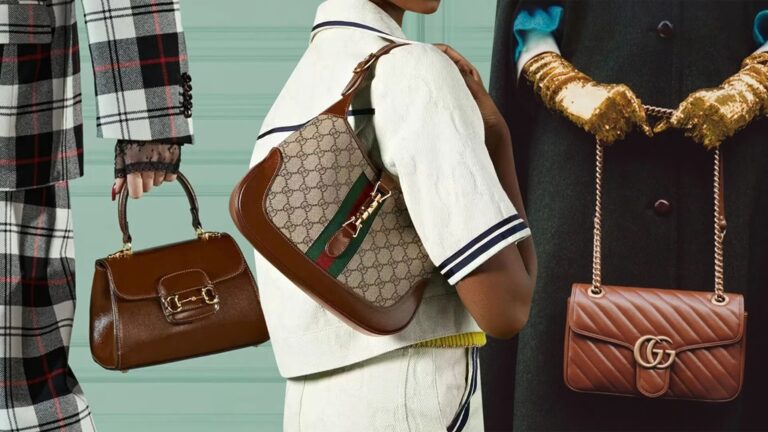Kate Spade and Kate Spade New York are two iconic fashion brands with a shared history but distinct identities today. Both are known for their fun, feminine aesthetic and focus on handbags and accessories. However, the brands have diverged into separate entities with unique offerings over the years.
In this comprehensive guide, we’ll break down the key differences between Kate Spade Vs Kate Spade New York. We’ll explore their origins, branding, product lines, price points, and more. Whether you’re a longtime fan or new to these fashion powerhouses, read on to learn everything you need about Kate Spade vs Kate Spade New York.
Origins and History
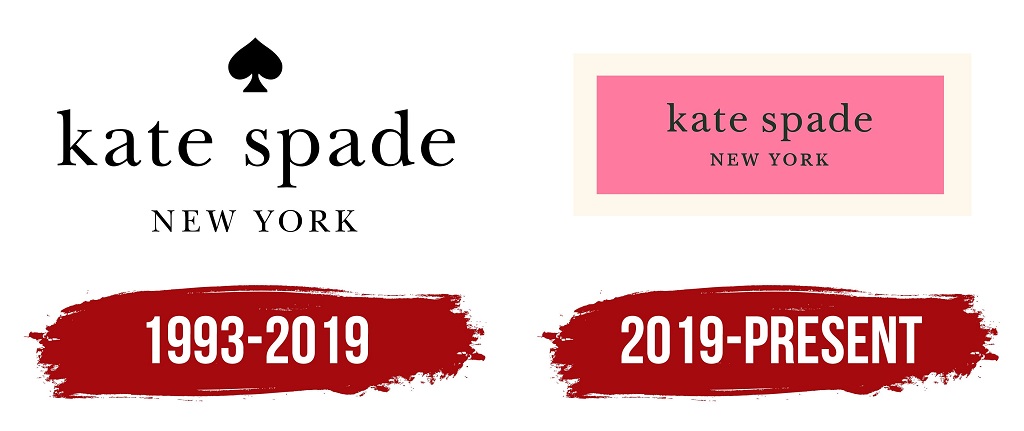
Kate Spade was founded in 1993 by designer Kate Spade and her husband, Andy Spade. Based in New York City, the brand quickly gained fame for its modern take on classic handbag silhouettes like the Sam bag. With their sharp, playful sensibility, Kate Spade’s bag designs became a must-have accessory in the 1990s and 2000s.
In 1999, the Neiman Marcus Group acquired a majority stake in Kate Spade LLC. Over the next decade, Kate Spade expanded its product offerings into a full-fledged lifestyle brand. It opened retail stores worldwide and launched clothing, shoes, jewelry, stationery, eyewear, and home decor lines.
Then, in 2006, Liz Claiborne Inc. purchased Kate Spade LLC and combined it with its other fashion brands, including Juicy Couture and Lucky Brand Jeans. At this point, the “Kate Spade New York” moniker was introduced to differentiate between Kate Spade’s design history and its future as part of a larger company.
Kate Spade New York continued to blossom as part of Liz Claiborne Inc., which eventually changed its name to Fifth & Pacific Companies, Inc. In 2013, Fifth & Pacific sold the intellectual property rights of Kate Spade New York to brand development firm Tapestry Inc. (formerly Coach, Inc.). Under Tapestry’s umbrella, Kate Spade New York has gained popularity through creative partnerships and marketing.
Meanwhile, designers Kate and Andy Spade left the brand in 2007 to pursue other ventures. After a non-compete agreement expired in 2016, the couple launched their next fashion brand, Frances Valentine. Today, Kate Spade New York and Frances Valentine operate independently from each other.
Branding and Positioning
The Kate Spade and Kate Spade New York brands each have a distinct image and ethos:
Kate Spade
- Quirky, feminine, playful
- Vintage-inspired romantic designs
- Bright colors and bold prints
- Whimsical details like polka dots and bows
- Affordable luxury, premium details
- Aspirational yet approachable
Kate Spade New York
- Modern, sleek, cosmopolitan
- Contemporary, on-trend styling
- Neutral color palette
- Graphic patterns and shapes
- Attainable luxury, more accessible pricing
- Young, career-oriented demographic
The original Kate Spade brand was defined by Kate Spade’s personal aesthetic and design sensibilities. It had a retro, romantic feel that appealed to wealthy and older consumers. Kate Spade New York shifted towards a more contemporary, youthful look at slightly lower price points. The branding aims to resonate with young professionals and modern women on the go.
Product Lines
Both Kate Spade and Kate Spade New York are best known for their handbags. But today, the brands have expanded into full-fledged lifestyle labels with a wide range of products:
The Kate Spade Handbags
- Signature structured, boxy silhouettes
- Crossbody, shoulder, tote, and satchel styles
- Quilting, decorative bows, and spade logo
- Vibrant prints and color-blocking
Kate Spade New York Handbags
- Streamlined, minimalist shapes
- Crossbody, shoulder, and tote silhouettes
- Spade logo plaque accents
- Neutral leathers and color-blocked fabrics
Beyond Bags
Kate Spade categories:
- Ready-to-wear: clothing, shoes, jewelry, watches
- Accessories: wallets, sunglasses, hats, scarves
- Beauty: fragrance, lipstick, nail polish
- Home: decor, bedding, gifts, stationery
- Bridal: wedding dresses, fine jewelry
The Kate Spade New York categories:
- Ready-to-wear: clothing, shoes, jewelry, watches
- Accessories: wallets, sunglasses, tech cases, cold weather gear
- Home: decor, kitchenware, stationery, pet accessories
- Kids: diaper bags, clothing, shoes, toys
Kate Spade New York offers a broader range of products geared towards everyday living. Kate Spade focuses more on elevated heirloom accessories and particular occasion styles.
Pricing and Positioning
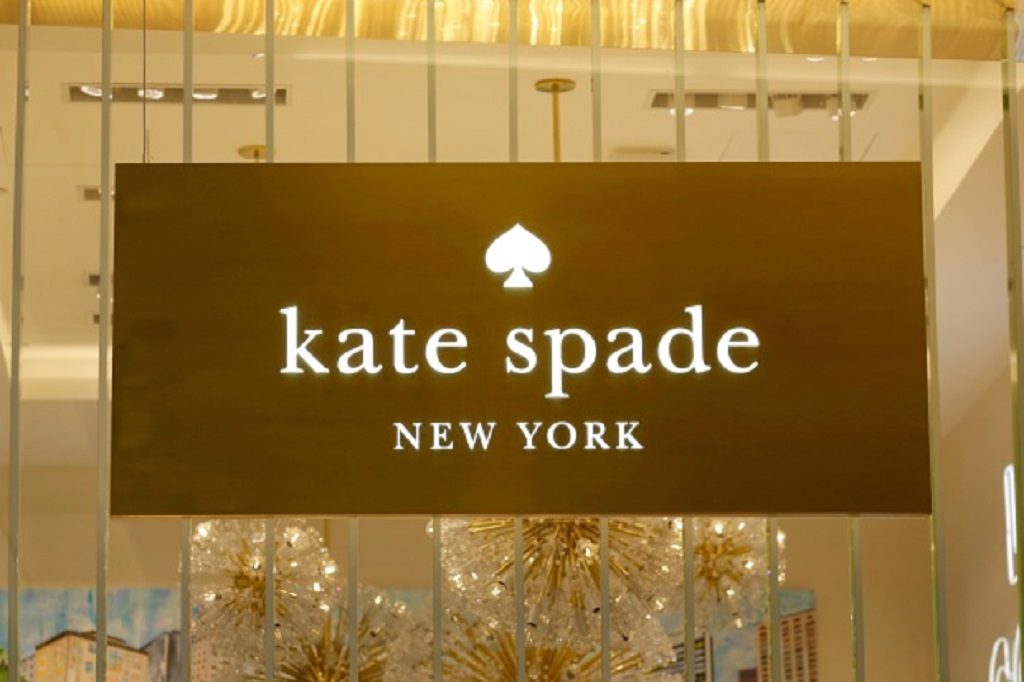
As two branches of the same original brand, Kate Spade and Kate Spade New York overlap in the mid-market luxury space. However, Kate Spade targets a higher spending demographic than Kate Spade in New York.
Kate Spade
Kate Spade is priced in line with premium designer brands. Handbags range from $300 – $500 on average. The brand aims to bring a luxe, aspirational feel at slightly more accessible prices than actual high fashion houses known for four-figure bags. Beyond handbags, Kate Spade shoes, jewelry, and clothes also have premium price points.
Kate Spade New York
At Kate Spade New York, most handbags cost $100 – $400. The pricing is lower than the main Kate Spade line, catering to younger shoppers or those seeking an entry-level designer piece. The brand positions itself as an accessible everyday luxury label. Beyond bags, Kate Spade New York’s apparel, shoes, jewelry, and home goods are affordable for their respective categories.
Where to Buy
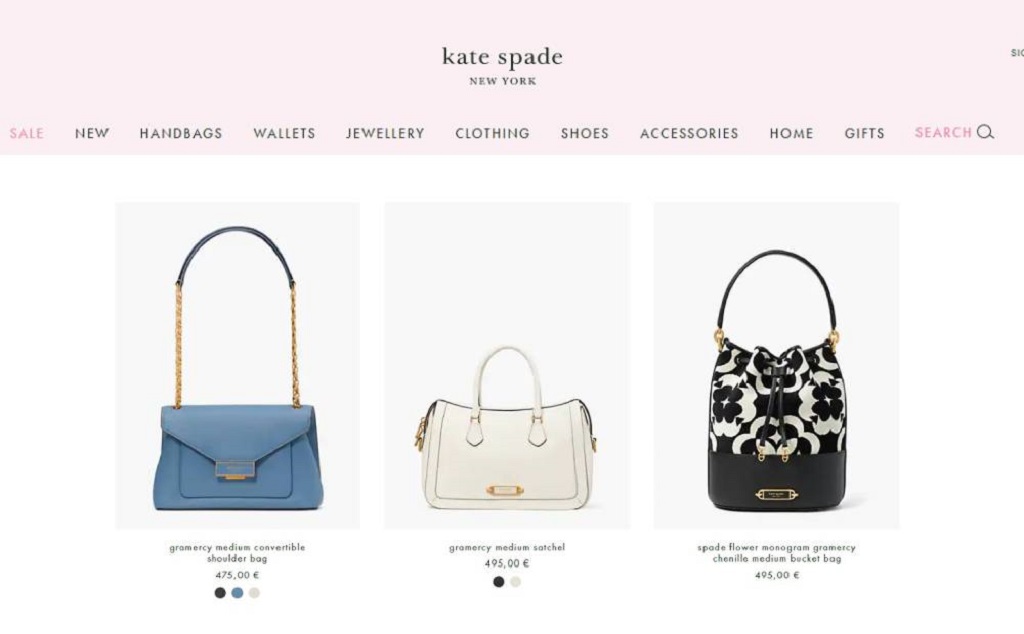
Kate Spade and Kate Spade New York products are sold globally through their retail stores as well as other major retailers:
The Kate Spade Retailers
- Kate Spade’s flagship stores
- Kate Spade’s online store
- Department stores: Nordstrom, Bloomingdale’s, Macy’s
- Premium retailers: Saks, Neiman Marcus
- International retailers
Kate Spade New York Retailers
- Kate Spade New York retail shops
- Kate Spade New York outlet shops
- Department stores: Nordstrom, Dillard’s, Macy’s
- Mainstream retailers: Amazon, Zappos, 6 pm, TJMaxx
- International retailers
The Kate Spade New York has wider distribution across department stores and mass-market retailers. Kate Spade’s distribution is concentrated in its stores, high-end department stores, and e-commerce channels.
Design and Artistic Direction
While Kate and Andy Spade initially helmed the Kate Spade brand, other creative directors have shaped the aesthetics of Kate Spade and Kate Spade New York over the years:
Kate Spade Creative Directors
- Deborah Lloyd (2007 – 2017): As Kate Spade’s second creative director after Spades’s departure, Deborah Lloyd reinvigorated the brand’s feminine sensibility with a vintage-inspired look. Known for her love of color, prints, and ladylike silhouettes, she gave Kate Spade a renewed identity that still drew on its original DNA.
- Nicola Glass (2017 – 2020): Nicola Glass succeeded Deborah Lloyd, bringing Kate Spade a more modern architectural aesthetic. Her designs featured minimalist shapes, graphic colors, and bold brand motifs. Glass helped contemporize Kate Spade while retaining its core girly spirit.
- Tom Mora (2020 – present): Current VP of Design Tom Mora continues Kate Spade’s romantic, feminine style legacy with a refined color palette and thoughtful details. Known for his expertise with leather goods and accessories, Mora focuses on elevating Kate Spade’s signature handbags and small leather goods.
Kate Spade New York Creative Directors
- Deanne Robinson (2008 – 2015): Deanne Robinson was the lead designer at Kate Spade New York for seven years. She brought a colorful, pop art-inspired look to the brand’s collections. Graphic stripes and spots mixed with vintage influences defined her joyful, youthful aesthetic.
- Raymond McKay (2015 – 2017): After Deanne Robinson’s departure, Raymond McKay took the helm at Kate Spade New York. His design approach channeled a 1960s mod sensibility with sleek, minimalist shapes and strong pops of color.
- Nicola Glass (2017 – 2020): Nicola Glass transitioned from Kate Spade to become creative director at Kate Spade New York in 2017. She modernized the brand’s look with practical details, menswear influences, and a muted color palette. Glass also focused on accessories and home goods.
- Tom Mora (2020 – present): Like at Kate Spade, Tom Mora currently oversees design at Kate Spade New York and his role as VP of Design at Tapestry Inc. His background in leather goods and accessories informs Kate Spade New York’s bags, jewelry, shoes, and more offerings.
Brand Collaborations
Both Kate Spade and Kate Spade New York regularly partner with other brands on limited-edition collections that merge their respective styles:
Kate Spade Collaborations
- Charlotte Olympia (2017): Kate Spade collaborated with Charlotte Olympia, another whimsical footwear brand, on a capsule collection of shoes and bags featuring leopard prints and bold florals.
- Rifle Paper Co. (2018): With its signature flower motifs and pastels, stationery brand Rifle Paper Co. was a fitting partner for a Kate Spade collection of bags, accessories, and stationery.
- Stokke (2020): Kate Spade brought its cheerful aesthetic to baby gear via a collaboration with premium stroller brand Stokke. It included diaper bags, strollers, and nursery accessories featuring dotted prints.
Kate Spade New York Collaborations
- Rifle Paper Co. (2016): Like Kate Spade, Kate Spade New York partnered with Rifle Paper Co. on a floral-themed accessories and stationery line.
- New Balance (2017): Kate Spade New York and New Balance blended their American heritage styles with graphic designs for an activewear and footwear collection.
- Casetify (2019): Accessories brand Casetify and Kate Spade New York worked together on a series of patterned phone cases.
Kate Spade vs Kate Spade New York: 5 Key Differences
Brand History: Kate Spade was founded by Kate and Andy Spade in 1993. After Liz Claiborne Inc. acquired the brand, Kate Spade New York was introduced.
Brand Identity: Kate Spade has a vintage-inspired, feminine look. Kate Spade New York is more contemporary and minimalist.
Product Selection: Both brands offer handbags, clothing, accessories, and home goods. Kate Spade has more special occasion styles, while Kate Spade New York focuses on everyday staples.
Pricing: Kate Spade is positioned as an aspirational luxury brand, with most bags priced at $300 – $500+. Kate Spade New York is more accessible, with bags mostly under $400.
Retail Presence: Kate Spade is sold at its stores, high-end department stores, and premium retailers. Kate Spade New York has wider distribution at mainstream department stores and mass retailers.
Frequently Asked Questions
What is the difference between Kate Spade and Kate Spade New York?
Kate and Andy Spade started the original brand, Kate Spade, in 1993. In 2006, Liz Claiborne Inc. launched Kate Spade New York after acquiring Kate Spade as part of its portfolio of brands. Also, Kate Spade has a more feminine, vintage-inspired look, while Kate Spade New York skews contemporary and youthful.
Does the same company own Kate Spade and Kate Spade New York?
Both brands are owned by Tapestry Inc. (formerly Coach, Inc.), which purchased Kate Spade New York in 2017. However, Kate Spade and Kate Spade New York operate as separate creative entities today with distinct design teams and positioning.
Is Kate Spade higher quality than Kate Spade New York?
Kate Spade is positioned as a premium designer brand, while Kate Spade New York offers more accessible luxury. However, both brands use high-quality leather and hardware on their handbags and focus on attention to detail. Kate Spade tends to command higher price points for perceived exclusivity.
Where should I shop if I want classic Kate Spade styles?
The Kate Spade brand and its stores will offer styles that closely align with the original vintage-inspired aesthetic that Kate Spade founded. Today, these classic and ladylike silhouettes are only available for purchase under the Kate Spade label.
Where can I find more affordable Kate Spade New York bags and accessories?
For lower prices, shop Kate Spade New York outlet stores or retailers like Amazon, 6 pm, and TJMaxx. The brand’s more mass distribution allows for discounted and sale prices on its contemporary handbag shapes and accessories.
In Closing
While Kate Spade and Kate Spade New York share common roots, they have distinct histories, branding, aesthetics, and product offerings today. Kate Spade retains a feminine, romantic spirit with playful accents and premium details. How much does a Gucci bag cost? becomes a poignant question as Kate Spade New York strategically shifts its focus towards a younger, more modern customer by embracing contemporary styling and offering accessible pricing. But the two sister brands are both beloved for their joyful celebration of color, prints, and whimsical details on handbags and beyond.


